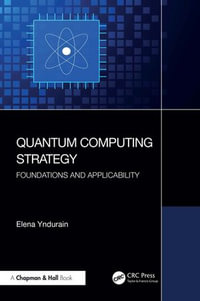
Computational and Instrumental Methods in EPR
By: Christopher J. Bender, lawrence berliner
eText | 27 December 2007 | Edition Number 1
At a Glance
eText
$159.01
or
Instant online reading in your Booktopia eTextbook Library *
Read online on
Desktop
Tablet
Mobile
Not downloadable to your eReader or an app
Why choose an eTextbook?
Instant Access *
Purchase and read your book immediately
Read Aloud
Listen and follow along as Bookshelf reads to you
Study Tools
Built-in study tools like highlights and more
* eTextbooks are not downloadable to your eReader or an app and can be accessed via web browsers only. You must be connected to the internet and have no technical issues with your device or browser that could prevent the eTextbook from operating.
ISBN: 9780387388809
ISBN-10: 038738880X
Published: 27th December 2007
Format: PDF
Language: English
Publisher: Springer Nature
Edition Number: 1
You Can Find This eBook In
This product is categorised by
- Non-FictionMedicineOther Branches of MedicineMedical Imaging
- Non-FictionScienceBiology, Life SciencesBiochemistry
- Non-FictionSciencePhysicsApplied PhysicsBiophysics
- Non-FictionSciencePhysicsNuclear Physics
- Non-FictionSciencePhysicsAtomic & Molecular Physics
- Non-FictionSciencePhysicsMaterials & States of Matter
- Non-FictionScienceChemistryAnalytical ChemistrySpectrum Analysis
- Non-FictionEngineering & TechnologyMechanical Engineering & MaterialsMaterials Science
- Non-FictionEngineering & TechnologyIndustrial Chemistry & Manufacturing TechnologiesIndustrial Chemistry
- Non-FictionScienceChemistryPhysical Chemistry























